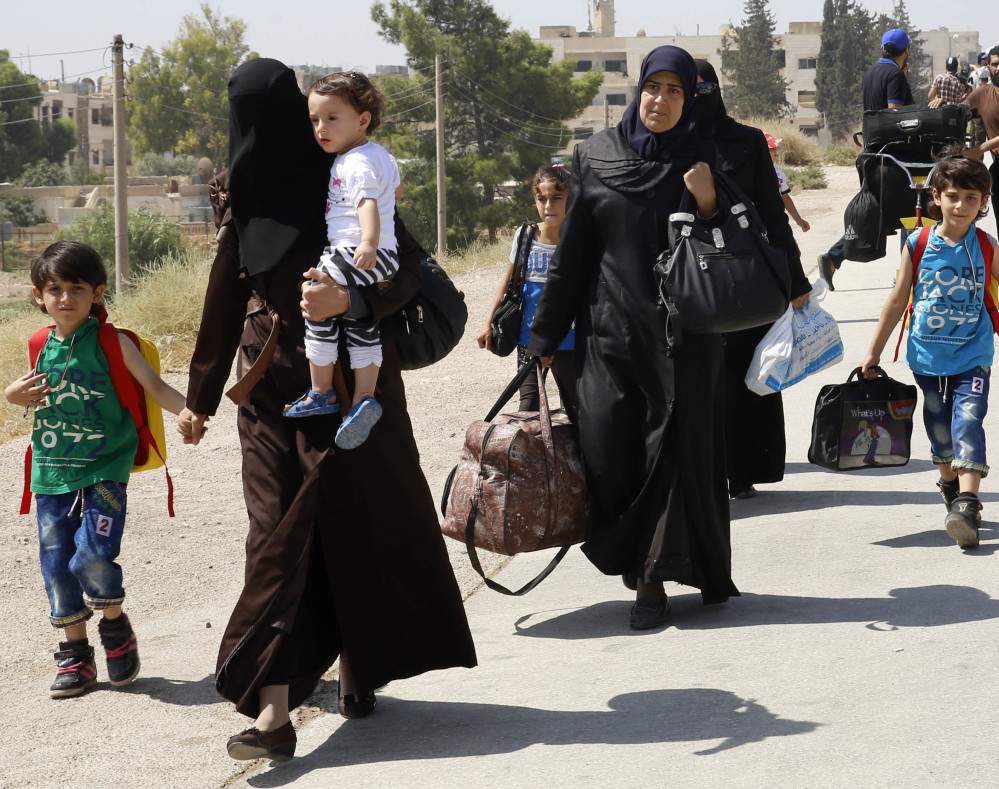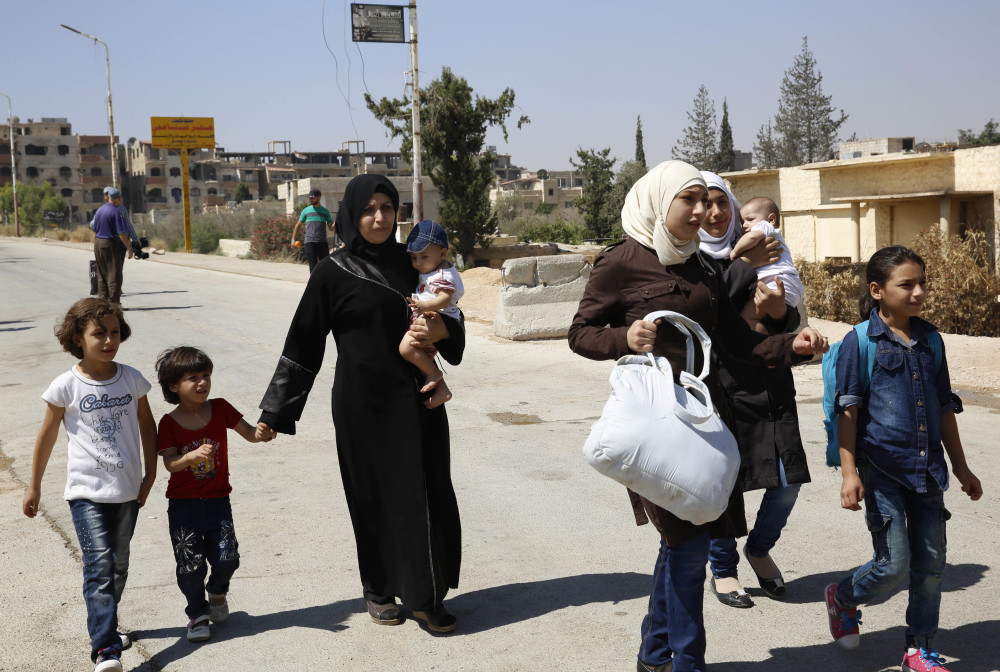BEIRUT — Once hubs of the Syrian uprising, the country’s rebellious capital suburbs are submitting to government control at a quickening pace, in a sign that the military’s grinding siege tactics are paying off.
The latest to fall was Moadamiyeh, which relented after three years of siege as food supplies dwindled for its estimated 28,000 residents and key infrastructure like hospitals were destroyed.
On Friday, implementation began in the deal, under which rebel fighters will move to opposition-held territory in the north and government security forces will move into the town, just a short drive southwest of the capital. The neighboring suburb, Daraya, surrendered and came under government control last week.
The accelerating pace of such surrenders points to how the Syrian military is tightening the screws on besieged areas, stepping up attacks on civilian infrastructure and refusing entry of critical medical supplies, despite sharp criticism by the U.N., which has tried to bring in humanitarian aid.
Surrender under such deals is “bitter salvation,” forced on residents through collective punishment, said a former resident of the besieged mountainside town of Zabadani.
“The regime’s strategy is clear,” said Ibrahim Abbas, an opposition activist who was exiled to rebel-held Idlib province as a condition to receiving treatment for a war wound. “A suffocating siege to foment hatred (among residents) toward activists and fighters, then an offer to evacuate.”
The deals at Daraya and Moadamiyah free up Syria’s military resources for other fronts, including the defense of the central city of Hama, which came under unexpected attack by rebels this week, and the siege of opposition areas in the capital’s eastern suburbs.
The ultimate goal appears to be to wipe out the relatively isolated rebel-held pockets around central Syria, effectively leaving just the main opposition-held heartland of Idlib province in the northwest and enclaves in the south.
The governor of the Damascus countryside province, Alaa Munir Ibrahim, said deals with other rebellious suburbs are under discussion. At least 16 areas around the country – home to more than a half million people – are under siege, almost all by government forces except for a few locations.
A U.N. humanitarian official warned Thursday that the town of Madaya northwest of Damascus and al-Waer, the last opposition neighborhood in the central city of Homs, could be the next to capitulate under siege, along with Foua and Kafraya, two pro-government towns in the north besieged by rebels.
Jan Egeland in Geneva admitted the U.N. had failed to neutralize what he has previously called a “medieval” tactic.
“A siege is not broken by the population giving up after starvation and bombing; a siege is lifted by humanitarian access and freedom of movement, in and out, by the civilian population,” said Egeland.
Daraya residents say the destruction of the suburb’s only remaining hospital earlier this month in a government strike was one factor compelling them to leave their homes in a surrender.
Send questions/comments to the editors.




Success. Please wait for the page to reload. If the page does not reload within 5 seconds, please refresh the page.
Enter your email and password to access comments.
Hi, to comment on stories you must . This profile is in addition to your subscription and website login.
Already have a commenting profile? .
Invalid username/password.
Please check your email to confirm and complete your registration.
Only subscribers are eligible to post comments. Please subscribe or login first for digital access. Here’s why.
Use the form below to reset your password. When you've submitted your account email, we will send an email with a reset code.